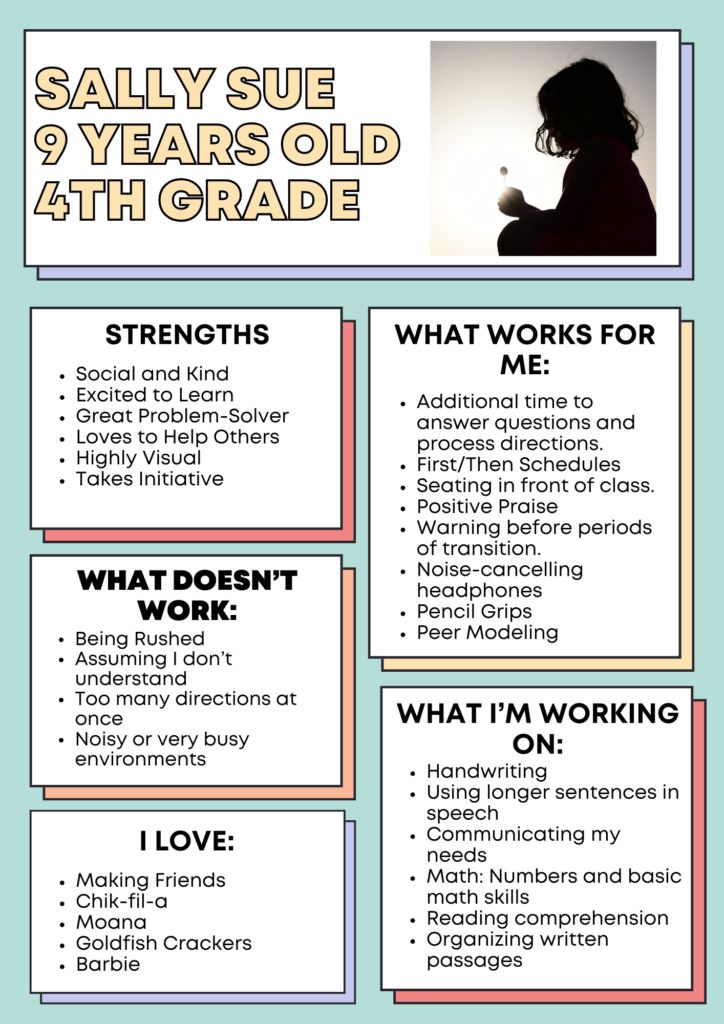 As the new school year approaches, it’s important to ensure that your child’s educational team is well-informed about their needs, strengths, and preferences. One highly effective way to do this is by creating and updating a one-page profile for your child, especially if they have an individualized education program (IEP). This profile serves as a quick, digestible snapshot of essential information that helps teachers and support staff understand and support your child better.
As the new school year approaches, it’s important to ensure that your child’s educational team is well-informed about their needs, strengths, and preferences. One highly effective way to do this is by creating and updating a one-page profile for your child, especially if they have an individualized education program (IEP). This profile serves as a quick, digestible snapshot of essential information that helps teachers and support staff understand and support your child better.
Why Create a One-Page Profile?
Despite having an IEP in place, it’s common for not all of your child’s teachers to have read it by the time school starts. This is particularly prevalent in middle and high school (where your child can have multiple academic teachers each semester), but it can also happen in elementary school. Often, teachers may only know your child will be in their classroom and whether or not they will have a paraprofessional for support. This gap in knowledge can lead to inadequate preparation and support for your child.
A one-page profile ensures that key information is readily available to all teachers and staff, bridging the gap between the detailed IEP and day-to-day classroom interactions. It can prevent misunderstandings and help your child start the school year on a positive note with the support they need.
Elements of a One-Page Profile
Creating an effective one-page profile involves condensing essential information into a clear and concise format. Here’s what you should include:
- Strengths: Highlight your child’s strengths, both academic and personal. This can include social, emotional, and other skills that might be leveraged to support their learning.
- What Works for Me: Describe the learning strategies and environments that help your child succeed. This gives teachers a good starting point for supporting your child.
- What Doesn’t Work: Identifying what doesn’t work for your child can help avoid unnecessary challenges and help teachers prepare strategies that will work for your child.
- What I’m Working On: Mention areas where your child struggles and needs additional support. This helps the team anticipate and plan for potential difficulties and should include IEP goals.
- I Love: List your child’s interests and favorite activities. This can be useful for motivation and as a conversation starter to build rapport with teachers and peers.
Creating and Sharing the Profile
While the content is the key aspect, the format can also make a difference. Aim for one page to keep it easily digestible. Use bullet points and short sentences. You can create the profile using tools like Canva for a polished look, or simply handwrite it and decorate it with your child for a personal touch.
Once you have the profiles ready, don’t just distribute them and hope for the best. Schedule a time before school begins or during open-house events to personally hand them to each teacher. Go over the profile with them to ensure they understand the information and have a chance to ask questions. This direct interaction reinforces the importance of the profile and encourages teachers to keep it in mind.
A one-page profile is a powerful tool to help school teams understand and support students with disabilities. By preparing and sharing this profile, you can ensure that your child’s needs are met right from the start, fostering a positive and inclusive educational experience.
